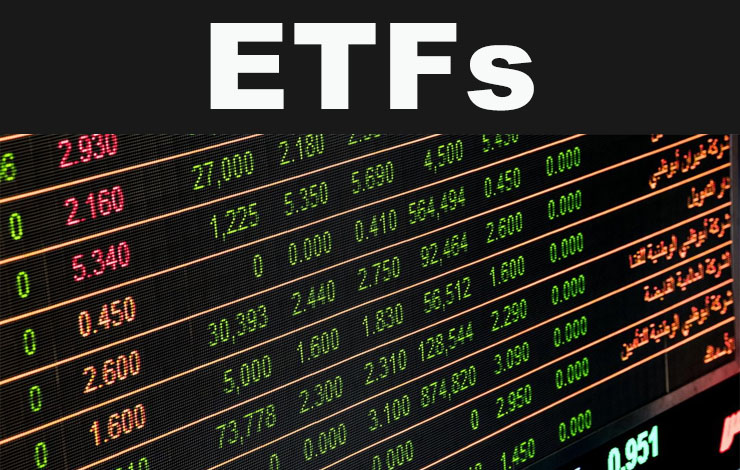The investment market is always evolving, and one of the most significant trends of recent years is the growth of ETFs (Exchange-Traded Funds). These financial instruments have gained popularity among investors of all experience levels due to their diversification, liquidity and cost efficiency.
In this article, we’ll explore important questions about investing in ETFs, providing up-to-date and truthful information to help you understand this new investment market trend.
What are ETFs and how do they work?
ETFs are exchange-traded investment funds that track an underlying index, such as an index of stocks, bonds, commodities, or currencies. They are designed to reflect the performance of that particular index. Unlike mutual funds, ETFs are traded as common shares on stock exchanges.
ETFs work through holdings in underlying assets such as individual stocks, bonds, or commodities. When you buy an ETF, you are acquiring a diversified basket of assets that mirrors your chosen index. The price of the ETF fluctuates throughout the day, as does the price of a stock, and you can buy or sell it at any time during trading hours.
What are the benefits of investing in ETFs?
Investing in ETFs offers several benefits, such as:
a) Instant diversification: ETFs allow you to invest in a wide variety of underlying assets at once. This provides instant diversification into your portfolio, reducing the risk associated with investing in just one asset.
b) Liquidity: ETFs are traded on stock exchanges and are therefore highly liquid. This means that you can buy or sell your holdings in ETFs at any time during trading hours.
c) Low management fees: Compared to traditional mutual funds, ETFs generally have lower management fees. This is due to the fact that ETFs are designed to track an index, rather than being actively managed by fund managers.
d) Transparency: ETFs are transparent, which means you can easily track the performance and composition of the underlying assets in real time. This provides greater visibility and understanding of investments.
What types of ETFs are available?

Types of ETFs
There are several types of ETFs available to investors, covering different asset classes and investment strategies. Some examples include:
a) Stock ETFs: These ETFs track specific stock indices, such as the S&P 500 or NASDAQ. They offer instant exposure to a diverse basket of stocks.
b) Bond ETFs: These ETFs track bond indices, allowing investors to access a variety of fixed-income securities, such as direct treasury or corporate bonds.
c) Commodity ETFs: These ETFs track the performance of commodities such as gold, silver, oil, or precious metals. They allow investors to have exposure to these markets without having to acquire the physical assets.
d) Thematic ETFs: These ETFs are related to specific topics such as technology, sustainability, health, or renewable energy. They allow investors to invest in specific sectors they see as promising.
How to invest in ETFs?
Investing in ETFs is relatively simple and can be done in a few steps:
a) Choose a broker: Open an account with a broker that offers access to ETF trading. Research and compare brokers based on their fees, trading platform and available features.
b) Define your investment objectives: Determine your financial goals and the level of risk you are willing to take. This will help you select the most suitable ETFs for your profile.
c) Research the available ETFs: Explore the different ETFs available by analyzing their benchmark indices, historical performance, portfolio composition, and other relevant information.
d) Take your pick: Based on your research, select the ETFs that meet your criteria. Consider factors such as diversification, costs, fund size, and liquidity.
e) Execute the transactions: After selecting the desired ETFs, execute the transactions through the broker’s trading platform. You can buy or sell ETFs according to your investment strategy.
What are the risks associated with ETFs?
While ETFs have many advantages, it’s important to be aware of the risks associated with them:
a) Market risk: ETFs are subject to market risk, i.e. fluctuations in the prices of the underlying assets. The ETF’s performance may be affected by changes in industry-specific economic conditions, policies, or events.
b) Liquidity risk: Although ETFs are generally liquid, liquidity can vary depending on the size of the fund and trading volume. In times of high volatility, there may be larger spreads between bid and ask prices.
c) Risk of Tracking Error: ETFs are designed to track an index, but slight variations may occur between the ETF’s performance and the index’s performance due to expenses, reinvestment adjustments, or other factors.
d) Concentration risk: Some ETFs may be concentrated in specific sectors or in a limited number of stocks. This can increase the risk associated with these ETFs if negative events occur in these specific sectors or stocks.
What did we learn in this article?
Investing in ETFs is a growing trend in the investment market, offering diversification, liquidity and cost efficiency. With a wide range of options available, ETFs allow investors to access different asset classes and investment strategies.
However, it is important to be aware of the risks associated with ETFs and conduct careful research before making any investments. With up-to-date information and a strategic approach, investing in ETFs can be an effective way to diversify your portfolio and pursue your financial goals in 2023 and beyond.
